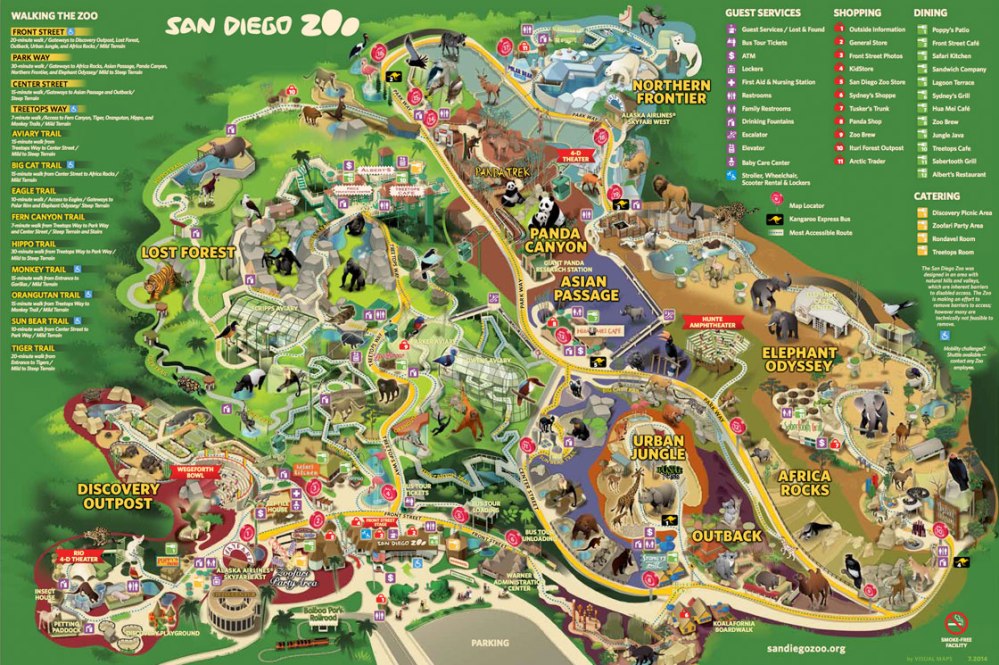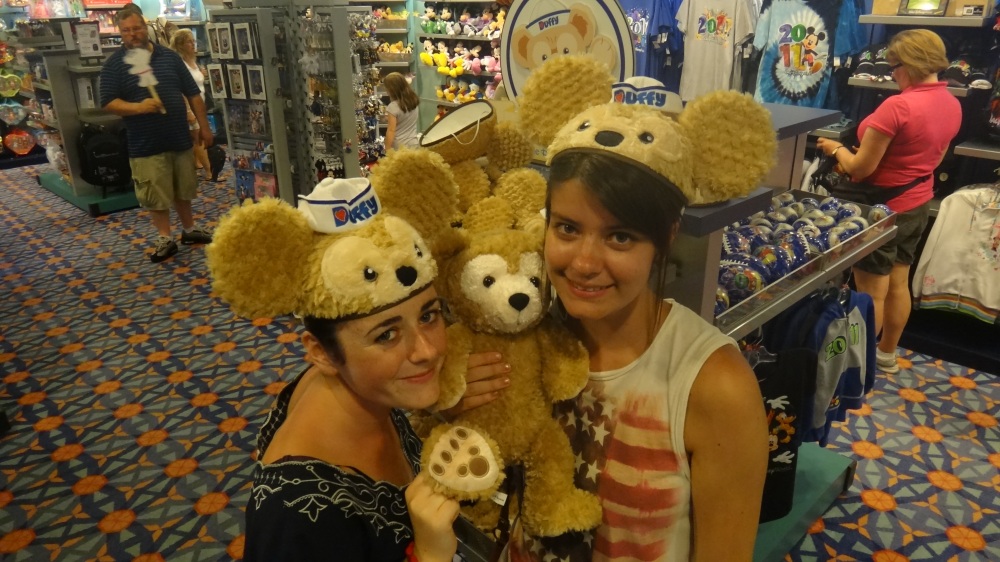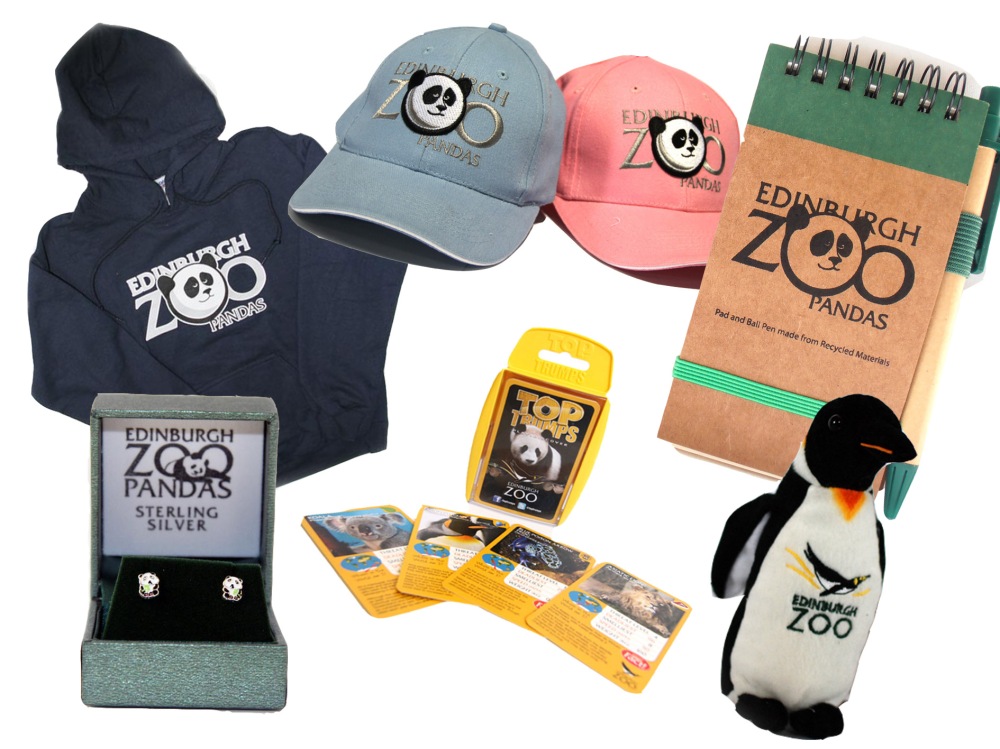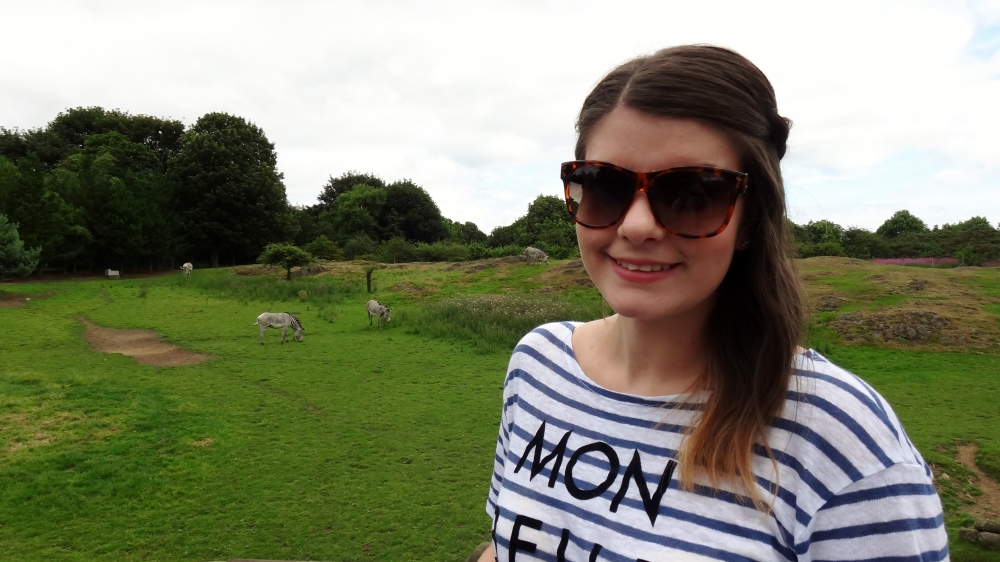Student Number: 13005497 This blog post has been created for a Queen Margaret University assignment. All photographs used within this post are owned by myself, unless highlighted otherwise.
Everybody loves a trip to the zoo and what’s not to love? They give you the opportunity to get up close and personal with exotic and/or endangered animals, be educated about their characteristics and habitats, and present you with a full day of fun.
There are over 1500 accredited zoos (Numberof) to visit around the world and with around 619 million people visiting annually (Beardsworth and Bryman, 2001), it is one of the most accessible types of tourist attraction available. Elliot (2011) describes zoos as institutions that concentrate on the display of wild and domestic animals. However, Zoos have come a long way since the first zoological garden was opened at Imperial Menagerie in Vienna, in 1752, and this blog will discuss how zoos have changed, why they have increasingly become victim to McDonaldization and Disneyization, using Edinburgh Zoo, Sea World and San Diego Zoo as examples to illustrate this argument and how these impact the society.
Beardsworth and Bryman (2001) cite Franklin (1999) and Urry (1990) in arguing that zoos are linking both the ‘zoological gaze’ and the ‘tourist gaze’. Franklin (1999) states that the demand of gazing at wild animals has grown considerably in the last two centuries, because people are becoming more interested in learning about animals and their habitats. Knowing that zoos are becoming viewed more as learning attractions and have adopted the principles of McDonaldization and Disneyization to develop their services.
McDonaldization
McDonalds is one of the biggest fast food chains in the world today, no matter where in the world you are, there will be a McDonalds restaurant less than 107 miles away (Ritzer, 2013). The reason why McDonalds has become such a huge presence in contemporary lifestyle is because it adheres to four principles which make it such a success. This can be termed as McDonaldization which is the process of the fast food chain’s principles dominating more and more sectors of society today (Ritzer, 2013).
There are four dimensions which have made the model of McDonaldization such a success, these are:
- Efficiency
- Calculability
- Predictability
- Control
I will be applying these four dimensions to evaluate the extent of McDonaldization in zoos.
Efficiency
McDonald’s have become the experts of efficiency. In providing faster service, they are able to respond and serve more customers, which in turn enhance profitability. Zoos have embraced the principle of efficiency in many ways; the internet allows consumers to buy and learn about a product or service online, which many businesses use to advertise and distribute their services. Zoos are no different.
Zoos use their online websites to showcase what they sell as a service, opening and closing times, and give the consumers the opportunity to purchase tickets in advance before arrival. Not only does this make entering the attraction faster and more efficient, because there is no need to queue, it also shows that they are making the consumers do most of the work that the main entrance desk staff would normally conduct themselves because the consumers are actively planning their trip ahead of time (Ritzer, 2013). In relation to Edinburgh Zoo, since the opening of their Giant Panda enclosure (www.edinburghzoo.org.uk) they have created time slots for visitors to book in advance, which helps save time for consumers because they will know what time they are viewing the pandas (Tian Tian and Yang Guang) and makes it easier for the staff because they can control the number of people in the enclosure at a time. Zoo keepers and other members of staff will be well trained in how to feed the animals, clean out the enclosures and use the computers effectively and efficiently. Ritzer (2013) states that after the staff member has worked on the job for duration of time, they will discover habits which will help them perform their tasks more efficient. These techniques show that zoos are becoming more economical in the way they are run because the more efficient they are, the less money it costs them.
Calculability
Calculability is the principle of calculating, counting and quantifying different things. It provides the ability of producing a product or service at a rapid pace, however it can be at the expense of quality, but at McDonalds it can be expressed that quantity equals quality (Ritzer, 2013). Ritzer (2013) describes that managers can develop specific measurements of how much work should be done in a day, and this is used within zoos, because they will be given rotas and targets to meet, and in turn this could help make the work more controlled and calculated, in order to increase productivity.
Predictability
As Ritzer (2013) suggests, in modern society, consumers want to know what is expected all the time. So when people visit a zoo, they will know exactly what is on offer to them before they visit because there is predictability and replication. No matter what zoo I visit, whether it is in America, Russia, China or Britain, I will see a similar selection of animals;
- Lions
- Penguins
- Exotic Birds
- Reptiles
Another aspect of predictability is the uniformity of staff. Ritzer (2013) uses the case study of what is expected of staff at Disney parks. Both female and male “cast members” have a set of rules on appearance which they must adhere to; no extreme coloured hair, and nail length must be no longer than a quarter of an inch. These regulations can be seen as very excessive, but Disney uses them to create replicability throughout the parks. Zoos have shown this replicability and predictability with their uniformity of staff. When visiting a zoo I want to be able to identify what type of job a particular staff member does. For example, at Edinburgh Zoo, the zoo keepers, can be easily identified by their khaki safari coloured uniform.This demonstrates a direct impact on social factors because employees are no longer seen as individuals, but as a collection. Zoos are perceived and anticipated as safe environments where families can explore without worrying about wild animals endangering their children because the zoos create a protective barrier between them. Zoos have become highly predictable in the services that they provide, because they are very homogenized through its uniformity or staff, types of services and selection of animals.
Control
Control is the last principle of McDonaldization. This principle is about the control of humans through increasing the use of nonhuman technology (Ritzer, 2013). People can be very unpredictable, which is a threat to organisations. So increased control is desired, however once people start acting like machines in their job, they can be replaced by machines, so organisations use this to control their employees. This is present in McDonalds as they control their employees by threatening to replace them with computers, because employees that are inefficient can slow down production and can increase costs.
In regards to the zoo industry, it can be said that it would be very difficult to control the zoo keepers by threatening them with technology, because the keepers are there to feed and care for the animals, which computers would find challenging. However, in the future anything could be possible. The reception staff on the other hand, could be easily replaced by computers, because now that consumers can purchase tickets online, there is very little need for their presence.
Controlling customers is a little more complicated, because they cannot be threatened by technology. McDonalds created three mechanisms that can help control their customers which are also found to be used by zoos, these are (Ritzer, 2013); implementing structural constraints, such as railings and written instructions to make customers behave in a certain manner, which in zoos is used to stop customers feeding or touching the animals. Providing customers with cues is also used, these could include bins for rubbish, placing soap sanitizing dispensers at the exits for customers to use when leaving enclosures. The last mechanism is that customers have become internalised, and know how to behave within zoos because it is the norm. This shows that controlling both the employee and customer can be easily achieved but could also be seen socially incorrect, as you are subliminally controlling the way consumers act by using the three mechanisms.
Disneyization
According to Bryman (2004), Disneyization is;
“The process by which the principles of the Disney theme parks are coming to dominate more and more sectors of American society as well as the rest of the world.”
There are four dimensions of Disneyization that will be investigated in regards to zoos in this blog, these are;
- Theming
- Hybrid Consumption
- Merchandising
- Emotional Labour
Theming
Theming is the creation of a narrative to locations, and theme parks use this method because so many leisure activities have become homogenized and standardized, so theming is a way of differentiating and making places appear more interesting. Theming is a crucial aspect of the Disney theme parks; firstly the parks are given a narrative as a whole, and then divided into domains which represent a certain theme. From the maps below, it can be identified that zoos are using similar themed areas.
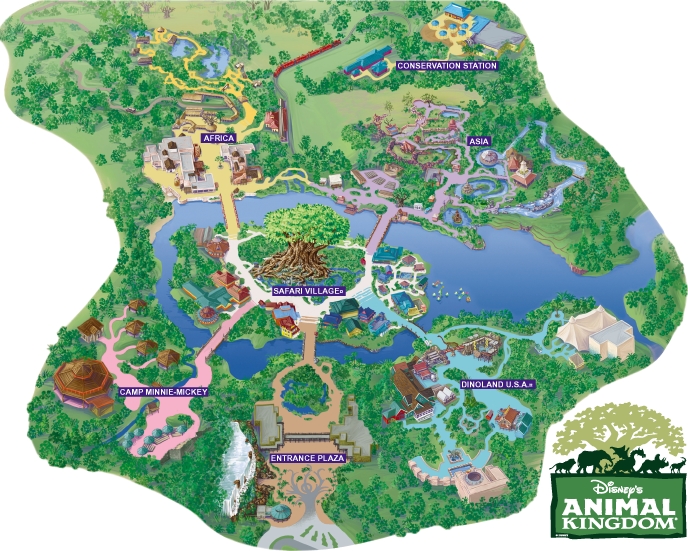 (Photo of Disney’s Animal Kingdom taken from www.disneyworld.disney.go.com)
(Photo of Disney’s Animal Kingdom taken from www.disneyworld.disney.go.com)
Disney are great at storytelling and when visiting Africa in Disney’s Animal Kingdom, you will not hear the hustle and bustle of everyday life (cars and buses) and see skyscrapers because you have been transported to that country, so the architecture, fauna, and sounds must resemble that of which the world they are recreating.
(A map of San Diego Zoo taken from http://zoo.sandiegozoo.org/content/map)
When Edinburgh Zoo knew that they had won the bid for the Chinese Giant Pandas, they began recreating a Chinese theme for their enclosure and the surrounding area. This makes the guests feel like they have been transported and creates an exciting experience. An image of the Chinese theming can be seen below.
Another way zoos are using theming is by reinventing the way they are used. Due to the changing of public concern of the safety and well-being of animals, zoos have become more political in justifying themselves as centres of conservation and education, rather than places of caged animals (Beardsworth and Bryman, 2001). This type of theming is used because of the growing unease of caged animals, which has made zoos employ the idea of free roaming animals from both Disney’s Animal Kingdom and African conservations.
Hybrid Consumption
The Disney theme parks have a plethora of services available to the guests; restaurants, shows, shop outlets, attractions, meet and greets with film characters and accommodation (Walt Disney World, 2014). This mash of services can be described as Hybrid Consumption, which is the fusion of different types of consumption. The reason for hybrid consumption is to keep the consumer within the location longer, because the longer they are in the venue, the more money they will spend (Bryman, 2004). Zoos have increasingly used this concept, because they have improved the consumers experience by creating more attractions. San Diego Zoo has recently developed new activities for visitors, these are; 4D Theatres, Camp Critters Sea Lion Encounter Show, play areas, and the Balboa Park Miniature Train which can be seen below.
(Photo of the Balboa Park Miniature Train taken from http://zoo.sandiegozoo.org/content/balboa-park-miniature-train)
San Diego Zoo has also recently introduced a small acrobatic show, which visitors can experience outside the Panda habitat, which can be viewed in the Youtube video down below.
Not only have zoos added attraction to their venue, but they also offer educational experiences; for an additional cost, guests can have breakfast with Koalas, interact with Pandas and a backstage tour of the zoo. This suggests that zoos are becoming increasingly more diverse in the services that they offer and are becoming more like the Disney theme parks.
Merchandising
This paragraph will discuss how zoos in general have employed the same merchandising techniques as Disney, to increase profitability and promotion.
Merchandising can be presented as objects that consumers can purchase which bear the copyrighted logos and images which are made under certain licenses (Bryman, 2004). Merchandising is important because as Bryman (2013) quotes Wolf (1999);
“It is no longer sufficient merely to turn out a hit movie, television show, magazine or book, because in many ways these products cannot be profitable on their own.”
This quote suggests that merchandising is a way of increasing more profits than what the original idea would do. It is also a way of constant advertisement, which is what is needed in order to survive the market today.
Disney has a wide and varied range of merchandise available at the Disney parks. They sell t-shirts, bags, ornaments, and jewellery which all have either the Disney logo or Mickey Mouse displayed on them. When people are asked to think of a popular piece of Disney merchandise, they will more than likely think of the famous Mickey Ears. Below are two images of myself at Walt Disney World wearing variations of the Disney Ears in 1999 and 2011.
The Disney theme parks are specifically designed to increase the possibility of consumers purchasing the merchandise, which Bryman (2004) agrees fully by stating that shops are built as exits to the rides and attractions, to make consumers feel obligated to look around the store and possibly purchase products. I also agree with this argument because after venturing on the Pirates of The Caribbean ride, you are signalled to exit through the gift store which is full of pirate merchandise and is designed to make you interested on what is on offer. The photo above also shows that the shops are lay out neatly and presented that no matter where you are standing, you are able to see everything on offer.
Due to the high profitability factor zoos have borrowed this process adopted by the theme parks, by creating a range of merchandise with the logo of the zoo. Beardsworth and Bryman (2001) quote the Director of Zoo Atlanta is stating that merchandising is a way for zoos to enhance the zoo experience for visitors because they can purchase a product and show that they indeed visit. Below is an image of some products that Edinburgh Zoo sells in their gift shops, which like Disney, is situated at the exit of the attraction.
(Image of products sold at Edinburgh Zoo, taken from http://www.store.rzss.org.uk/en.aspx)
It can be shown from the images that Edinburgh Zoo have used their merchandise as a marketing tool for the Zoo, using the logo and the image of animated pandas to showcase their new exhibit. This confirms that most zoos are employing the Disney principle of merchandising, to promote the zoo and increase profitability.
Performative Labour
Many businesses that provide a service are growingly conducting their work as a performance; this is formally known as “Performative Labour”. Pine and Gilmore (2011) state that;
“Work is theatre”
This quote suggests that the workers are the cast of a portrayal of real life. One of the main aspects of performative labour is emotional labour. This is analysed as the emotions portrayed by the workers when interacting with consumers. This type of labour is a way of engaging the consumer on an emotional level with the organisation because of the worker, and creating customer loyalty. In order for organisations to create emotional labour, they actively seek ways to motivate their employees to commit to the organisation and and created customer care programmes which help employees practice how to interact with consumers.
Bryman (2004) states that the most commonly used form of emotional labour is a smile and Disney employees are renowned for their friendliness, and service with a smile. This technique is used to show guests that the employees are having as much fun as the paying visitors. The warmth and helpfulness of the cast members has created much appreciation from consumers because they feel welcomed (Eisner, 1999). The Disney Institute (2014) describes an event which took place within one of the Disney theme parks, which represents how well the cast members are trained in dealing with guests; this can be read here. Within that same article the Disney Institute discusses ways that Disney creates exceptional customer service;
- Listen to employees
- Hire for attitude, not aptitude
- Giving purpose
- Give employees creativity and responsibility
During my time at Disney’s Magic Kingdom I came across a cast member, who can be seen in the image below, he was very approachable and welcomed everyone into the park, and he set up a really good atmosphere. His job was to sell balloons, and after asking him how he felt about his job, he said;
“…even though I sell balloons all day, I always have a smile on my face, because seeing the guests happy and smiling, makes my job worthwhile.”

Zoos have the same rules set in place, when it comes to customer service. Beardsworth and Bryman (2001) cite Dibb (1995) in stating that zoos encourage their staff to acquire a positive attitude towards consumers because otherwise it can create a negative response and could make the zoo lose customers.
Another way zoos are using emotional labour is by putting the animal in a performative atmosphere. This can be done by creating shows, where the animals perform tricks and display human behaviour, such as mischievousness and friendliness (Bryman, 2004). An example of this is The One Ocean show at Sea World, where the famous Killer Whale can be seen show jumping, doing tricks and showing the love they have for their trainers, photos of this can be seen below.
However, back in 2010 a devastating accident occurred which changed the way Sea World operates its shows. An Orca trainer, Dawn Brancheau, was killed during a show at the Orlando based Marine Park and Sea World executives have now forbidden the trainers to enter the water while the Killer Whales are present (National Geographic, 2014). This event has changed the public’s opinion on animals in captivity, so zoos have had to create an environment which presents an enjoyable environment, that can be seen by the consumers.
When animals are separated from people by bars, people are reminded by prisons and become sad (Franklin, 1999). For example the image below shows a Wallaby, behind bars.
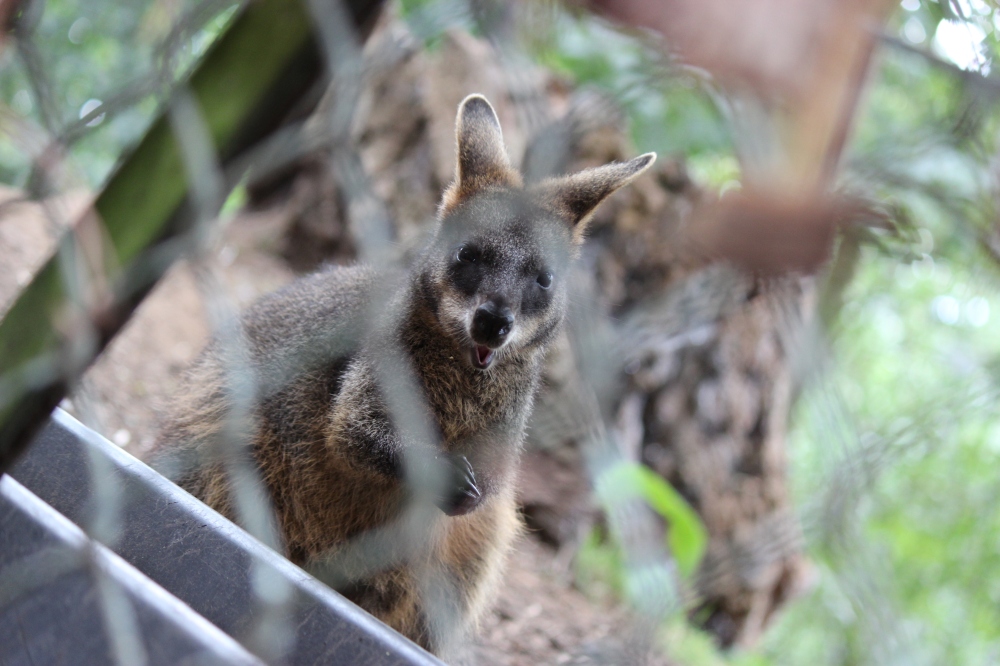 This image showcases that these animals are not free to roam as they please, whereas the next image is of Zebras, who are able to travel around a huge enclosure which expresses the emotion of freedom and happiness in consumers.
This image showcases that these animals are not free to roam as they please, whereas the next image is of Zebras, who are able to travel around a huge enclosure which expresses the emotion of freedom and happiness in consumers.
Overall it can be concluded that the principles of both McDonaldization and Disneyization have become increasingly implemented throughout zoos around the world. Which can be achieved through the efficiency of services, controlling of staff, predictability of what is on offer, the theming of the location, the merchandise that the zoos produce and the emotional labour that can effect the consumers experience. However it can be noted that in doing so can create impacts on both political and social factors of society.
References
BEARDSWORTH, A., and BRYMAN, A., 2001. The Wild Animal in Late Modernity: The Case of the Disneyization of Zoos. Tourist Studies.[online] June, vol. 1, no. 1, pp. 83-104. [viewed on 29 October 2014] Available from: http://tou.sagepub.com/content/1/1/83
BRYMAN, A., 2004. The Disneyization of Society. London: Sage Publications Ltd.
DISNEY INSTITUTE and MCKINSEY & COMPANY, 2014. The Secret to Delighting Customers? Put Employees First. [online] Disney Institute. 16 January 2014. [viewed on 27 October 2014] Available from: https://disneyinstitute.com/blog/2014/01/the-secret-to-delighting-customers-put-employees-first-/233/
EDINBURGH ZOO., 2014. Animals and Attractions. [online] [viewed on 24 October 2014] Available from: http://www.edinburghzoo.org.uk/animals-attractions/
EDINBURGH ZOO., 2014. Store. [online] [viewed on 24 October 2014] Available from: http://www.store.rzss.org.uk/en.aspx
EISNER, M., and SCHWARTZ, T., 1999. Work In Progress. Pennsylvania State University: Hyperion.
ELLIOT, N., 2011. Zoos and Wildlife Parks. Encyclopedia of Consumer Culture. [online] October, pp. 1556-1557. [viewed on 29 October 2014] Available from: https://knowledge.sagepub.com/view/consumerculture/n587.xml
FRANKLIN, A., 1999. Animals and Modern Cultures: A Sociology of Human – Animal Relations in Modernity. [online] London: Sage Publications Ltd. [viewed on 30 October 2014] Available from: https://knowledge.sagepub.com/view/animals-and-modern-cultures/n4.xml?rskey=3tQy7A
NATIONAL GEOGRAPHIC., 2014. Family of SeaWorld Trainer Kiled by Orca Speaks Out for First Time. [online][viewed on 29 October 2014] Available from: http://voices.nationalgeographic.com/2014/01/22/family-of-seaworld-trainer-killed-by-orca-speaks-out-for-first-time/
NDNTAKEOVER24., 2013. Acrobat at San Diego Zoo. [online video][viewed on 23 October 2014] Available from: https://www.youtube.com/watch?v=eCpusO_RQ9Y
RITZER, G., 2013. The McDonaldization of Society. London: Sage Publications Ltd.
SAN DIEGO ZOO., 2014. Experiences. [online] [viewed on 25 October 2014] Available from: http://zoo.sandiegozoo.org/experiences
SEAWORLD., 2014. One Ocean. [online] [viewed on 24 October 2014] Available from: http://seaworldparks.com/en/seaworld-orlando/attractions/shows/one-ocean/
WALT DISNEY WORLD., 2014. Parks and Destinations. [online] [viewed on 25 October 2014] Available from: https://disneyworld.disney.go.com/destinations/
